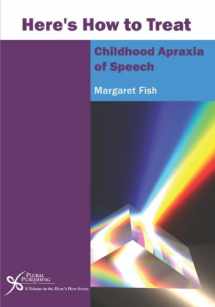
Here's How to Treat Childhood Apraxia of Speech
Book details
Summary
Description
Little information is available to speech and language pathologists searching for practical ideas about treatment of childhood apraxia of speech. It can be difficult for therapists to determine how to structure treatment sessions, provide reinforcement, use multisensory cues targeted to the learning style of the child, and choose treatment targets based on factors other than phonemes and phonological processes. Here's How to Treat Childhood Apraxia of Speech empowers speech and language pathologists with a clear vision of systematic treatment approaches to achieve positive outcomes for children with apraxia of speech. Each chapter addresses those questions most commonly posed by speech and language therapists. The first part of the book defines Childhood Apraxia of Speech (CAS) and describes the characteristics commonly associated with CAS. Guidelines for conducting a motor speech examination are included so that therapists can make treatment plan decisions and develop appropriate goals that address the unique needs of children with apraxia. The foundations of effective treatment are described, including phoneme sequencing, repetitive practice, intensity of treatment, selection of vocabulary, and use of multisensory cues to facilitate improvement of motor speech skills. Additional considerations are discussed, including vowels, prosody, production of phrases and sentences, and reinforcement/feedback. A portion of the book provides information that can be distributed to parents in order to help them understand the nature and treatment of CAS in their child. In addition, home program forms and ideas are provided, so that therapists have a structured way of communicating with parents about therapy goals, vocabulary, and extension activities for home practice.


We would LOVE it if you could help us and other readers by reviewing the book
Book review



